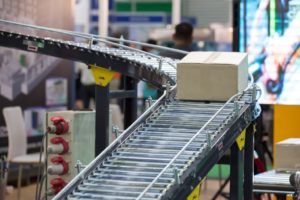The idea of living in a house that is eco-friendly and self-powered is becoming popular. The increasing costs of living are one of the main drivers of this push. A self-sufficient home can end up paying only a fraction of the cost of a house dependent on various utilities and modern conveniences. They can even start earning, depending on what improvements they have. If you want your household to become truly independent, here are some of the areas where you need to see a change.
Electricity
The most important element of your home’s self-sufficiency is where it will get its electricity. Many of the things that make modern life easy and bearable require it. In the past, houses that went off the grid had to live with the idea that they had to operate without electricity. But modern technology has made it possible to have several options to choose from when it comes to power generation.
The most popular choice is solar energy. You can buy solar panels yourself and install them or call one of the several solar companies out there to do the job. The main advantage of solar is that it provides consistent energy. Most of the time, people place solar panels on their roofs. If you have space on your property, it is better to have them laid out as independent solar panels. This gives you more space than your roof. Since your panels will be generating all of your electricity, you want as many panels as possible.
Another great choice for self-sufficient homes is wind power. Wind turbines are now affordable enough to install on a property. They are still a huge investment and a bit risky. Additionally, not everyone can have one. You need a place that will receive enough wind regularly. This is not always consistent though so many wind power users combine it with solar and battery storage to get through the slow days.
Water
Another necessary part of your home is water. You’ll need it for cleaning, bathing, cooking, and drinking. Even a small house goes through thousands of gallons of water every year. The simplest solution is to drill for a well. Looking for an aquifer and finding one can be hit or miss. But if you do find one, then you will have a consistent source of water for your house. You will need to get a good pump and a water filter, but that should be enough for your water needs.
If you can’t drill for a well, then you can cut down on your water needs by saving up rainwater. Though it is not good for drinking, rainwater is clean enough for various other purposes like watering the plants and even bathing. Unfortunately, you still need to get drinking water from other sources. While not completely self-sufficient, this approach can mean a large cut in your water bills.
Having large water tanks on your property can also help save on water. If you are ever cut off from water, you have a supply available.
 Heat
Heat
Heating is another concern for many homes. This is the simplest to achieve. All you need is a good wood-burning stove or fireplace. If your property has access to trees, then you can gather firewood and kindling regularly. A stove is for more than just heating. You can also cook on it, saving you on gas and electricity.
Your main concern is to ensure that your wood-burning stove has proper exhaust. Create proper ventilation shafts or keep the chimney unblocked. You will also need to have a sufficient stock of dry fuel around.
Food
Many self-sufficient households also have a setup where they can produce their food. The most common one is to have a backyard garden. Fruits and vegetables are easy to grow and only require regular care. If you have enough space in your home, you can have a garden that produces all of your food needs.
As for animal products, some homes have chickens and even have small fisheries. The chickens produce eggs, and their waste is great for fertilizer. Those with small fish ponds usually focus on fish that are easy to take care of and grow to huge sizes. Both of these can provide protein for many households. There are even homes that have goats and pigs on them to provide even more food.
Self-sufficiency is an admirable goal. Even if you don’t achieve full 100 percent independence, you have cut down on your consumption. This can give you major savings while also ensuring that you will always have a consistent supply of essentials in your home.



















